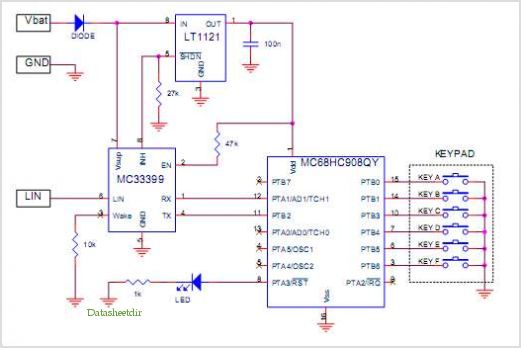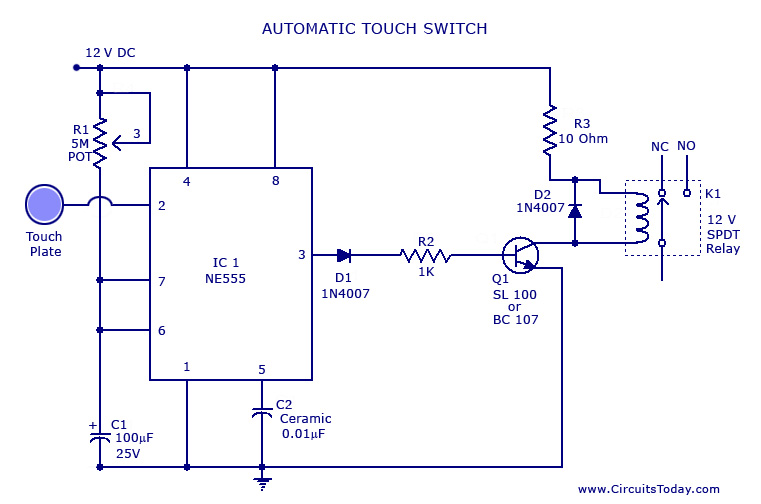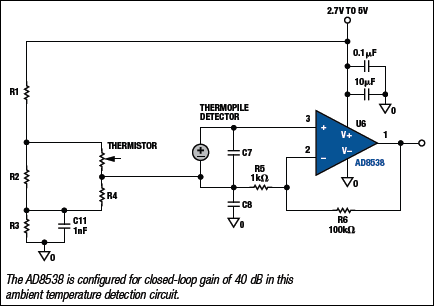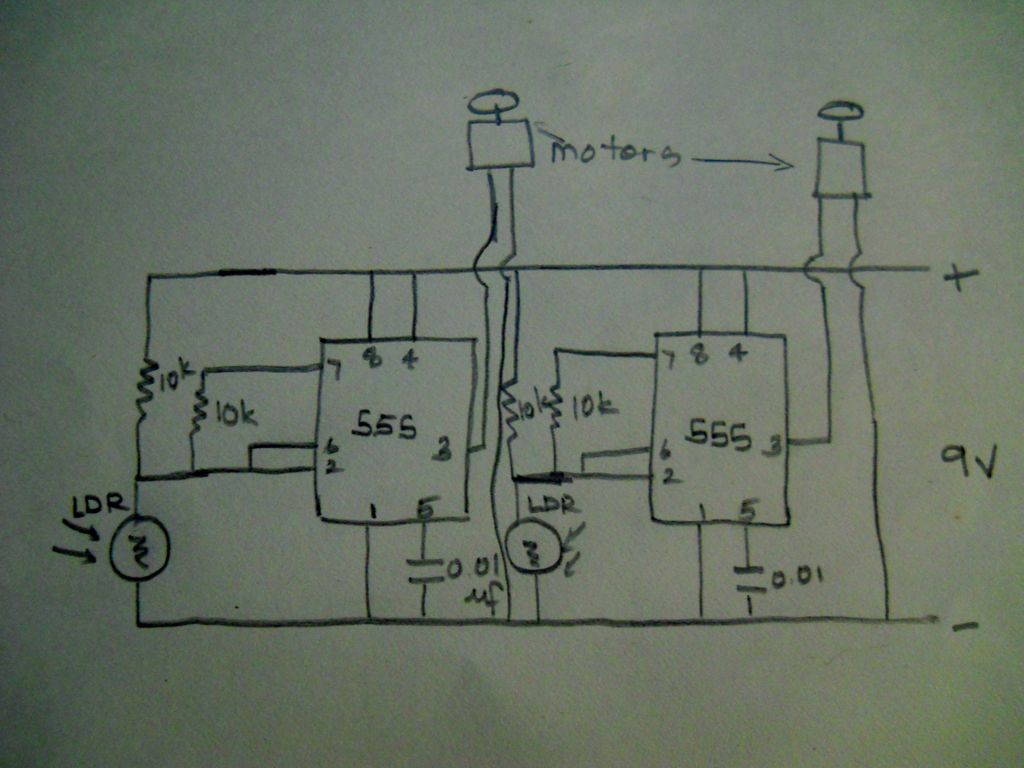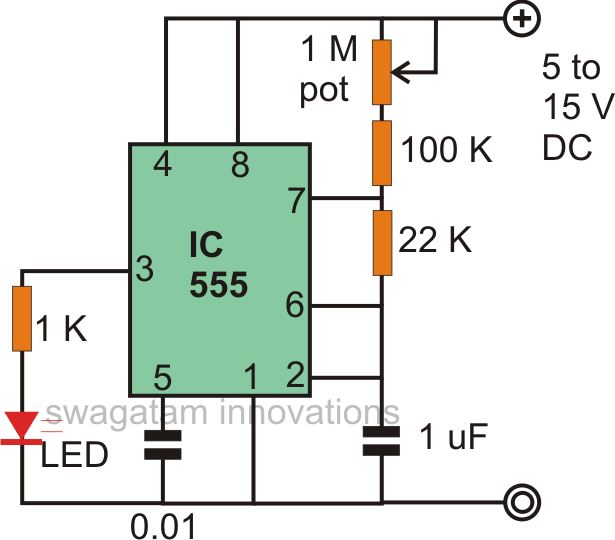
Beeper Using 1C 555
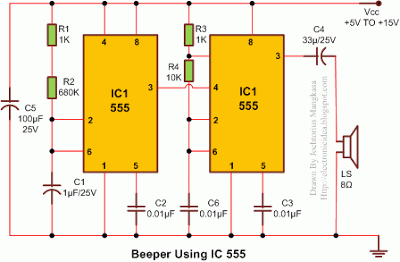
This beeper circuit utilizes two 555 integrated circuits (ICs) and can operate within a supply voltage range of 5 to 15V DC. It is suitable for applications requiring an alarm or beeping signal. The first IC (IC1) is configured in astable mode to generate a square wave output at approximately 1 Hz. The second IC (IC2) is also set up in astable mode, producing an output frequency of around 1 kHz. The output from IC1 (pin 3) is connected to the reset terminal (pin 4) of IC2, allowing the continuous 1 kHz tone from IC2 to be interrupted by the 1 Hz signal from IC1, resulting in a beeping sound. Capacitor C4 is included to filter out DC signals. The circuit functions effectively when activated by a relay or mechanical switch; however, modifications are necessary for operation with logic ICs, such as CMOS or TTL. Instead of connecting pin 4 of IC1 to Vcc, it should be linked to the output of the logic element intended for activation. A logic high at pin 4 will activate the beeper, while a logic low will deactivate it. The remainder of the circuit remains unchanged.
The beeper circuit described employs two 555 timer ICs arranged in astable configurations to produce distinct frequencies that interact to create a beeping sound. The first 555 timer (IC1) generates a low-frequency square wave at approximately 1 Hz, which serves as a control signal for the second timer (IC2). The second timer operates at a higher frequency of around 1 kHz, producing a continuous tone. The interaction between the two frequencies results in an audible beep, as the 1 Hz square wave from IC1 resets IC2, effectively interrupting its output.
The output from IC1 at pin 3 is crucial as it directly influences the operation of IC2. When IC1 outputs a high signal, it resets IC2, silencing the 1 kHz tone momentarily. This creates a distinct beeping pattern, where the frequency of the beeps corresponds to the output frequency of IC1. Capacitor C4 serves an essential role in the circuit by blocking any DC signals that could interfere with the operation of the timers, ensuring that only the intended AC signals affect the output.
For applications involving logic ICs, such as CMOS and TTL, adjustments to the circuit configuration are necessary. Specifically, the reset pin (pin 4) of IC2 must be connected to the output of the logic element that will control the beeper. This modification allows the logic level to dictate the activation of the beeper; a high logic level at pin 4 will turn the beeper on, while a low logic level will turn it off. This flexibility makes the circuit adaptable for various control schemes, enhancing its utility in electronic projects requiring auditory alerts or signals.
Overall, this beeper circuit is a versatile solution for generating audible alerts, with straightforward modifications that enable integration with different control logic systems.Here is a `beeper` circuit employing two 555 ICs. It can be used in various circuits (having supply voltage of 5 to-15V DC) that require an alarm or a `beeping` signal. IC1 is connected in astable mode in the circuit in such a way that squarewave output at about 1 Hz is obtained.
lC2is also connected in astable mode, but it gives an output with ab out 1 kHz frequency. The output of IC1 (pin 3) is connected to `Reset` terminal (pin 4) of IC2. So, the continuous I kHz tone of IC2 is interrupted by the I Hz signal from IC1, producing a`beep-ing` sound. Capacitor C4 is used to restrict DC signals. The circuit operates satisfactorily when it is to be activated by a relay or a mechanical switch, but when it is to be operated by logic ICs, such as CMOS or TTL ICs, a bit of modification is required.
Instead of connecting pin 4 of ICI to Vcc, it should be connected to the output of the logic element through which it is to be activated. A logic`I`at pin4 will activate the beeper and logic `0` will turn it off. Rest of the circuit would remain the same. 🔗 External reference
The beeper circuit described employs two 555 timer ICs arranged in astable configurations to produce distinct frequencies that interact to create a beeping sound. The first 555 timer (IC1) generates a low-frequency square wave at approximately 1 Hz, which serves as a control signal for the second timer (IC2). The second timer operates at a higher frequency of around 1 kHz, producing a continuous tone. The interaction between the two frequencies results in an audible beep, as the 1 Hz square wave from IC1 resets IC2, effectively interrupting its output.
The output from IC1 at pin 3 is crucial as it directly influences the operation of IC2. When IC1 outputs a high signal, it resets IC2, silencing the 1 kHz tone momentarily. This creates a distinct beeping pattern, where the frequency of the beeps corresponds to the output frequency of IC1. Capacitor C4 serves an essential role in the circuit by blocking any DC signals that could interfere with the operation of the timers, ensuring that only the intended AC signals affect the output.
For applications involving logic ICs, such as CMOS and TTL, adjustments to the circuit configuration are necessary. Specifically, the reset pin (pin 4) of IC2 must be connected to the output of the logic element that will control the beeper. This modification allows the logic level to dictate the activation of the beeper; a high logic level at pin 4 will turn the beeper on, while a low logic level will turn it off. This flexibility makes the circuit adaptable for various control schemes, enhancing its utility in electronic projects requiring auditory alerts or signals.
Overall, this beeper circuit is a versatile solution for generating audible alerts, with straightforward modifications that enable integration with different control logic systems.Here is a `beeper` circuit employing two 555 ICs. It can be used in various circuits (having supply voltage of 5 to-15V DC) that require an alarm or a `beeping` signal. IC1 is connected in astable mode in the circuit in such a way that squarewave output at about 1 Hz is obtained.
lC2is also connected in astable mode, but it gives an output with ab out 1 kHz frequency. The output of IC1 (pin 3) is connected to `Reset` terminal (pin 4) of IC2. So, the continuous I kHz tone of IC2 is interrupted by the I Hz signal from IC1, producing a`beep-ing` sound. Capacitor C4 is used to restrict DC signals. The circuit operates satisfactorily when it is to be activated by a relay or a mechanical switch, but when it is to be operated by logic ICs, such as CMOS or TTL ICs, a bit of modification is required.
Instead of connecting pin 4 of ICI to Vcc, it should be connected to the output of the logic element through which it is to be activated. A logic`I`at pin4 will activate the beeper and logic `0` will turn it off. Rest of the circuit would remain the same. 🔗 External reference
